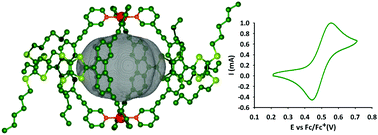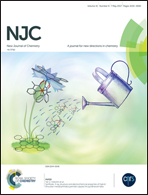A self-assembled M2L4 cage incorporating electron-rich 9-(1,3-dithiol-2-ylidene)fluorene units†
Abstract
An electron-rich redox-active M2L4 cage is depicted. The cage is constructed through coordination driven self-assembly of a 9-(1,3-dithiol-2-ylidene)fluorene bis-pyridyl ligand in the presence of the Pd(BF4)2(CH3CN)4 complex. The corresponding discrete structure has been fully characterized in the solution as well in the solid state (crystal structure), showing notably that each of the four ligands surrounding the cavity can be reversibly oxidized upon a one electron process.



 Please wait while we load your content...
Please wait while we load your content...